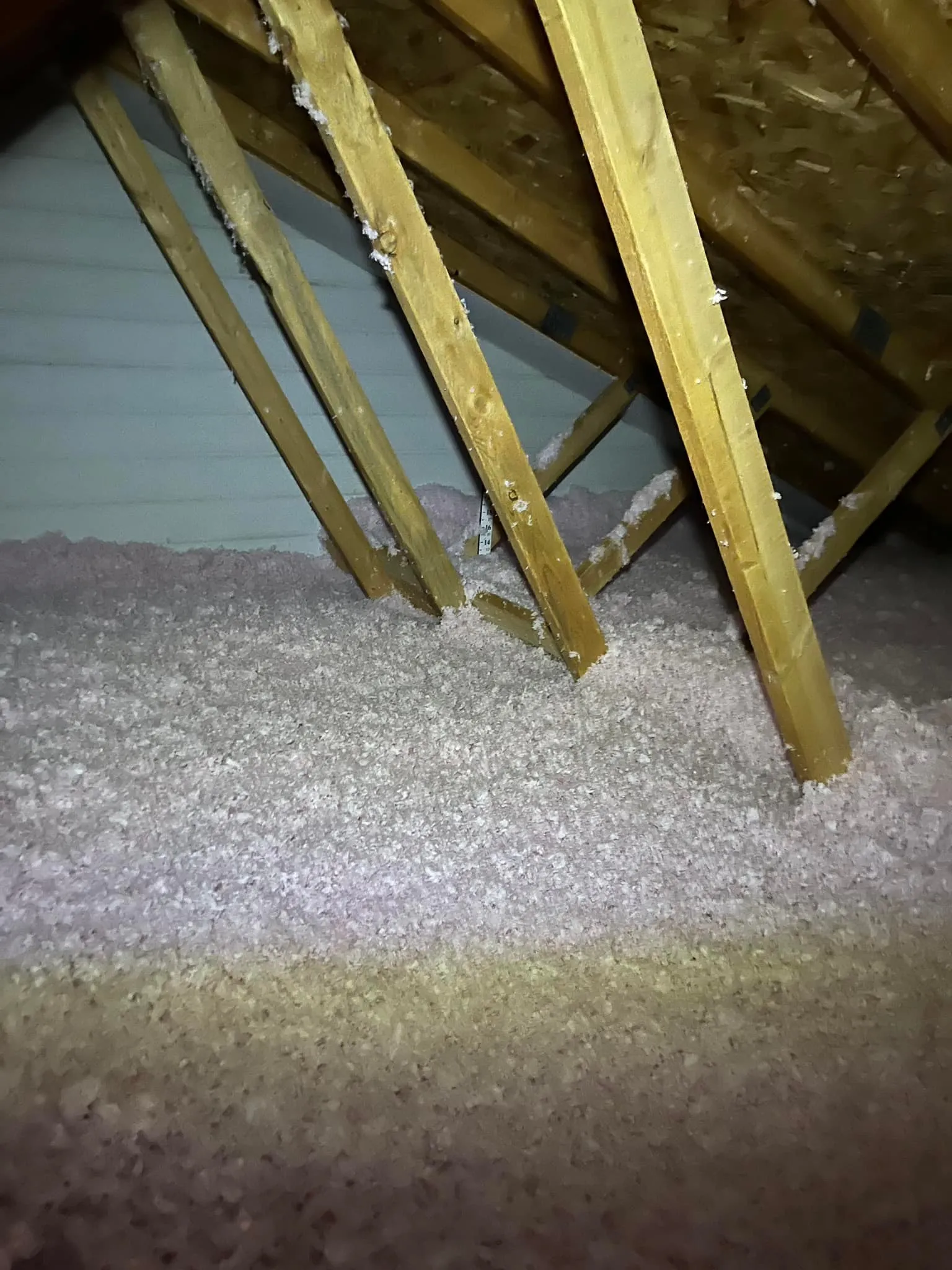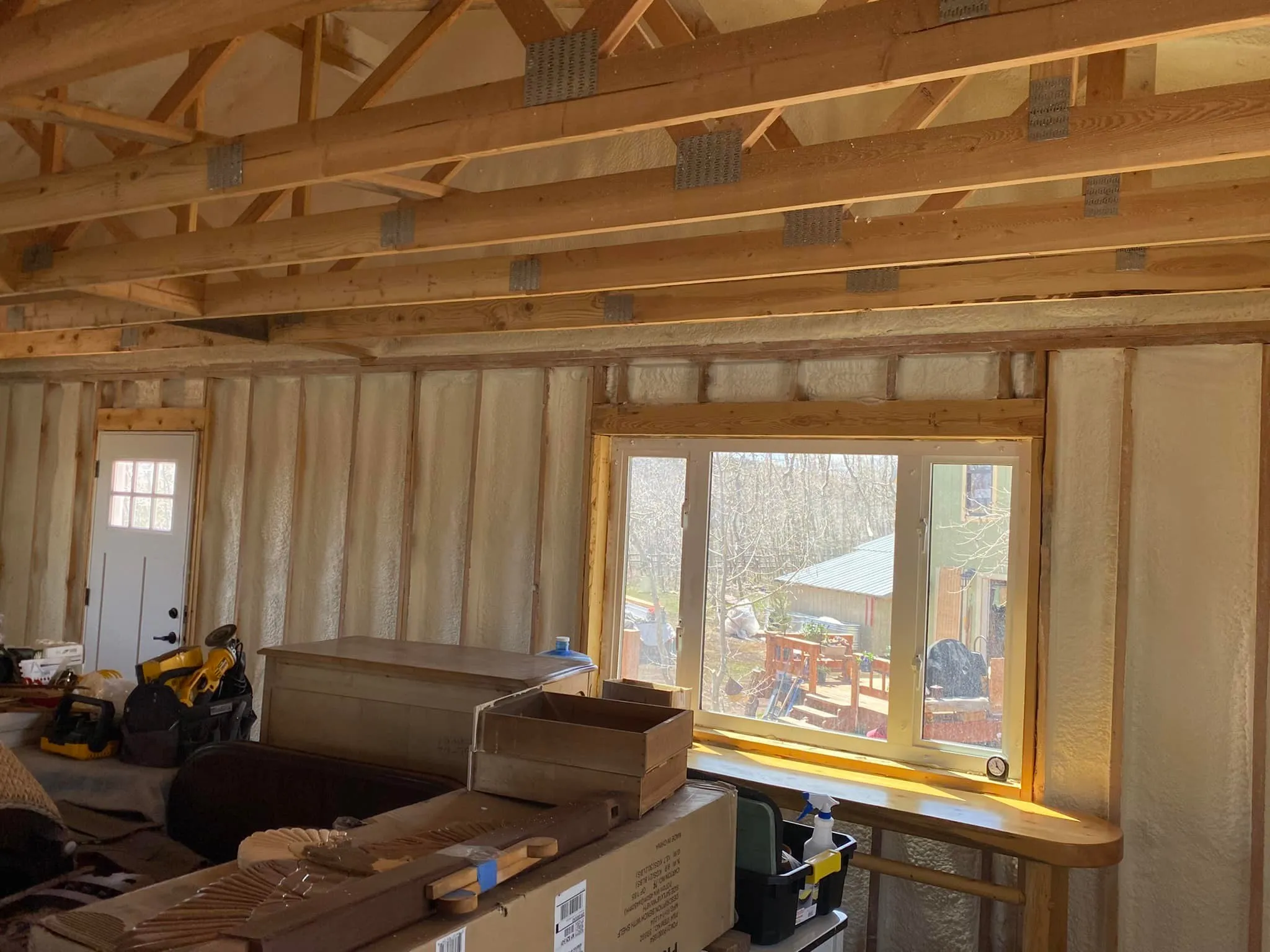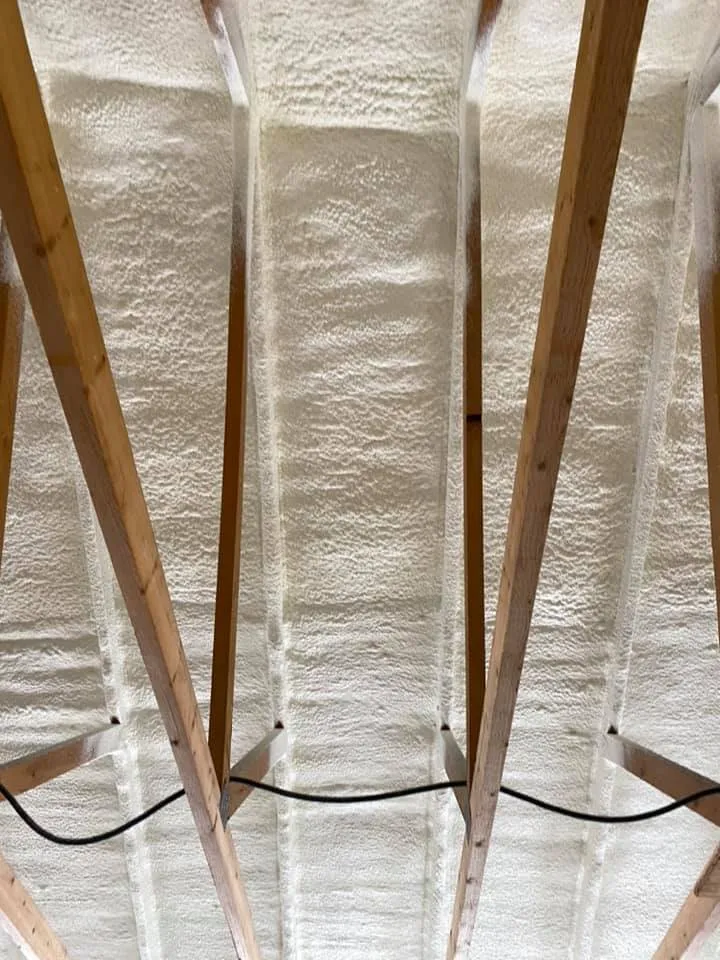
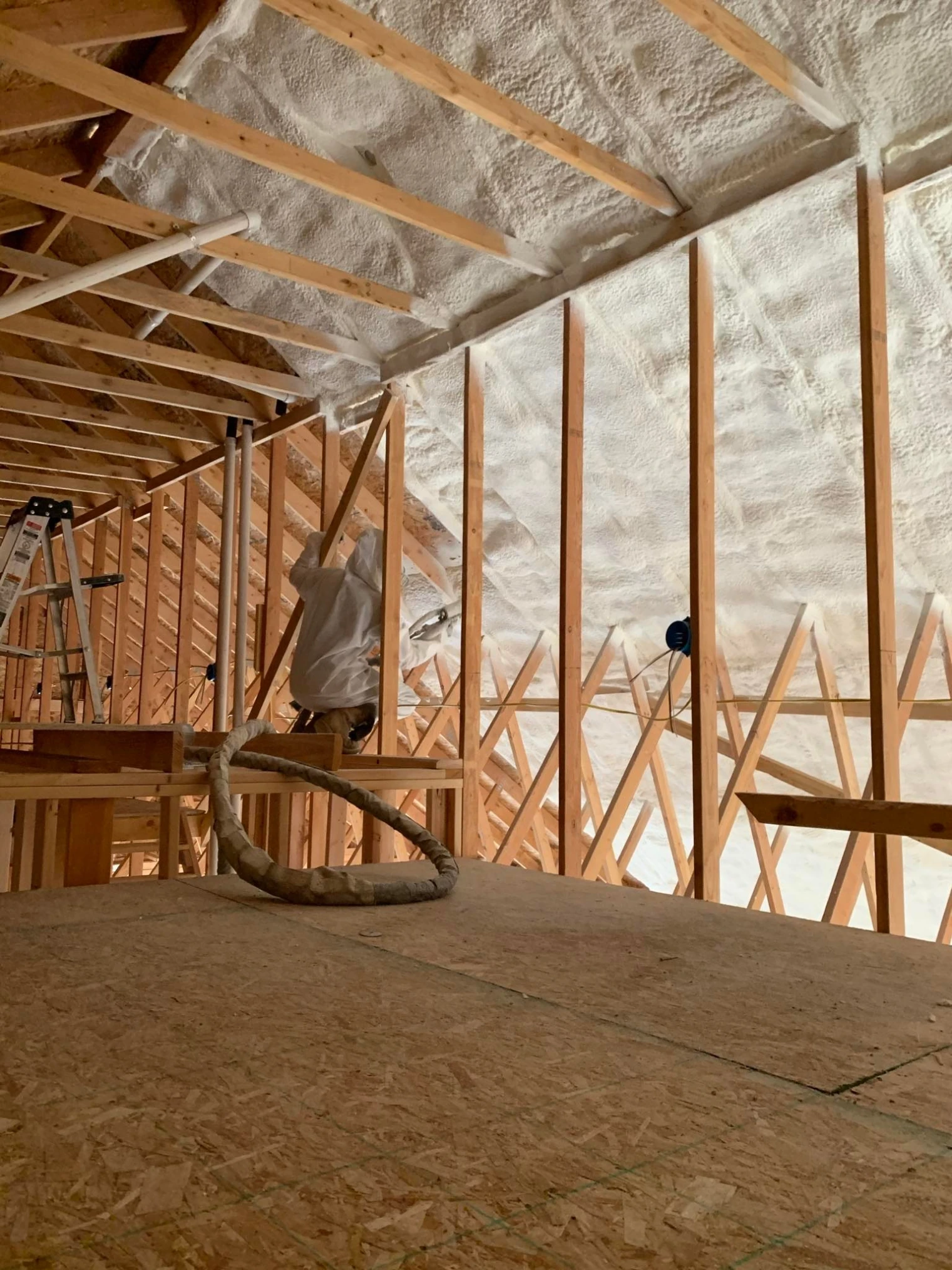
Spray foam performs well in attic insulation by providing both an air barrier and thermal resistance in a single application. It reduces heat transfer, controls moisture intrusion, and minimizes air leakage more effectively than traditional insulation methods. In both vented and unvented attic designs, spray foam maintains consistent indoor temperatures and reduces strain on HVAC systems.
This article outlines technical specifications, practical applications, and performance data of spray foam insulation based on real-world usage. The material has been applied across a range of climates and structures, including homes in high-altitude cold zones and commercial buildings in dry, wind-exposed environments. Findings are based on professional installation experience and field performance outcomes.
Spray foam insulation works by expanding upon application to fill cracks, gaps, and crevices. It creates a seamless thermal envelope that effectively isolates attic spaces from outdoor conditions.
Air movement between conditioned and unconditioned areas significantly impacts energy loss. Spray foam’s cellular structure blocks these exchanges, reducing energy demand by up to 20% depending on the building’s layout and air infiltration rate (Source: U.S. Department of Energy).
Attics often face condensation problems due to fluctuating temperatures and poor ventilation. Closed-cell spray foam provides a vapor barrier that minimizes moisture build-up and mold risks. In colder climates like Wyoming, this added protection reduces structural wear over time.
| Spray Foam Type | R-Value per Inch | Air Barrier | Vapor Barrier | Expansion Rate | Application Suitability |
|---|---|---|---|---|---|
| Open Cell | ~3.6 | Yes | No | High (100:1) | Interior attic sheathing |
| Closed Cell | ~6.5 | Yes | Yes | Low (30:1) | Roof decks, cold climates, low-clearance areas |
Use closed-cell spray foam under roof decks where snow loads or ice dams are common. It increases structural stiffness while providing vapor resistance.
| Feature | Open Cell Spray Foam | Closed Cell Spray Foam | Fiberglass Batt | Blown-In Cellulose |
|---|---|---|---|---|
| R-Value/Inch | ~3.6 | ~6.5 | ~3.2 | ~3.5 |
| Air Sealing | Excellent | Excellent | Poor | Moderate |
| Moisture Resistance | Low | High | Low | Moderate |
| Sound Absorption | High | Moderate | Low | High |
| Application Flexibility | High (irregular areas) | Moderate | Low | Moderate |
| Longevity (Years) | 30+ | 30+ | 10-15 | 15-20 |
Spray foam offers better performance in regions with large temperature swings or low winter temperatures. For Wyoming’s high-altitude and semi-arid conditions:
Verify attic ventilation design before installation. An unvented attic with spray foam requires specific code compliance to avoid moisture traps.
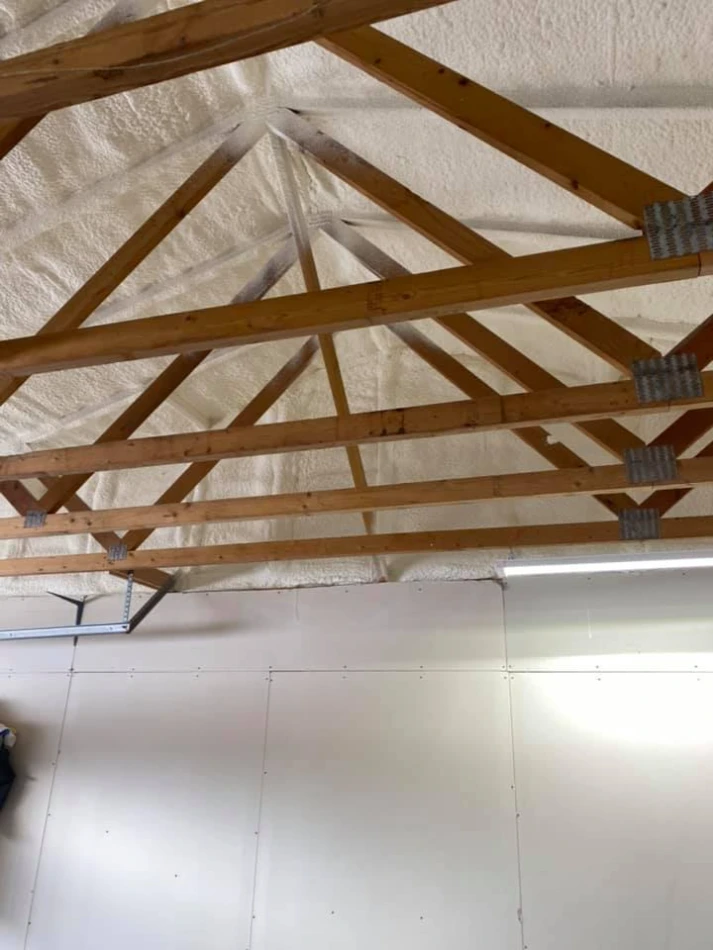
Spray foam acts as both an air and thermal barrier, sealing gaps and reducing heat transfer better than fiberglass or cellulose. It helps maintain stable indoor temperatures and lowers energy bills by minimizing air leakage.
It depends on your climate and attic design. Closed-cell is ideal for cold or high-altitude areas due to its higher R-value and moisture resistance. Open-cell is better for interior spaces where sound absorption and breathability are priorities.
Most attics are suitable, but factors like roof pitch, access clearance, and existing insulation affect application. Low-clearance or unvented attics may need closed-cell spray foam and specific prep for code compliance.
Spray foam insulation performs well in attics by solving multiple problems at once—air leakage, thermal loss, and vapor control. Closed-cell options suit colder, high-altitude environments where condensation and structure durability are concerns. Open-cell works in controlled interior spaces where breathability and noise absorption are priorities.
Inspect attic design, local code compliance, and climate conditions before choosing a product.
For expert insights on attic insulation needs, contact High Country Solutions. Reach out by email at [email protected] or call (307) 248-9063 for guidance. Applications and material choice depend on structure type, local building codes, and long-term performance goals. Professional assessment ensures optimal results.
Vented attics may require different air sealing strategies than unvented ones.
Certain old or degraded insulation types must be removed or sealed off.
Installers must maintain clearance around heat sources and sensitive equipment.
Closed-cell is better for durability and moisture protection; open-cell favors sound control and economy.
Closed-cell and open-cell types can last over 30 years without degradation if installed properly.
It does not serve as nesting material, but it doesn’t deter rodents entirely. Physical barriers are still needed.
Properly installed foam retains shape and performance. Shrinking often results from poor mixing or incorrect temperatures during application.
Technically possible but often not recommended. Pre-existing materials may compromise foam adhesion and air sealing.

